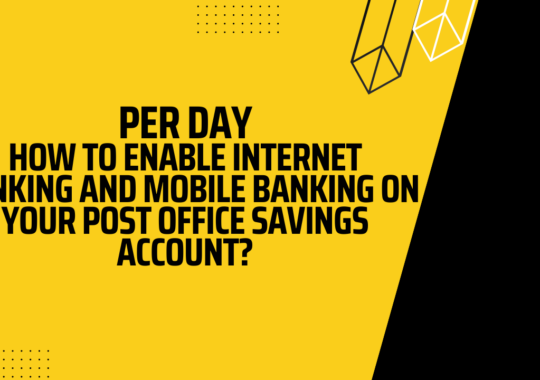Banks derive a significant chunk of their profits from their corporate clients through services like virtual account management, treasury management, cross-border payment settlement, and trade finance. Anyone currently involved in the corporate banking sector knows just how much is at stake when it comes to retaining corporate clients and on boarding new ones.
But it isn’t easy for an institution to defend its market share amid stiff competition from other banks as well as new players like fintechs. Indeed, the effects of losing corporate clients due to issues like obsoletion, inefficiency, lack of transparency, and lack of opportunity are sure to be felt across any organization.
And while the corporate banking landscape is rife with new revenue opportunities, they can only be maximized by banks that are proactive about solving their internal issues. If you want to achieve full oversight over your corporate banking operations—and, in the process, clinch new opportunities at the right moment—here are four problems that you should pay attention to:
Difficulties with Setting Priorities for Innovation
One major issue that’s quite common among corporate banking departments is the issue of modernization. Although most banks acknowledge the need to innovate their corporate banking services, they often don’t know where to start. Not making the right decision about what to prioritize in terms of corporate banking innovations can oftentimes lead to money drains or losing revenue to faster, more innovative, and more agile competitors.
With this in mind, it’s in your bank’s best interests to prevent prolonged decision paralysis and to determine which corporate banking services to modernize first. Investing in a better digital payments solution is key if your goal is to oversee more high-value transactions in the next year. On the other hand, if you’re welcoming new corporate clients with hundreds of constituent accounts under their responsibility, it makes sense to prioritize your virtual account management instead.
The exact priorities for innovation may vary among banks. What matters is that your bank’s modernization efforts align with its vision for its future in corporate banking.
Spending Too Much on Corporate Banking Processes
Another recurrent problem that banks struggle with is cost efficiency. Without knowing it, corporate banking departments may be bleeding a lot of cash due to lags and inefficiencies in their core systems. A bank will be able to save a lot of money on its corporate banking processes by tracing the wounds and purposefully lowering the cost of doing business with its corporate clients.
The takeaway here is to act before your overhead costs for corporate banking balloon out of control. Find out which processes are the most expensive, which processes are responsible for creating costly and burdensome silos, and how you can leverage high-powered automation and analytics technologies to keep your corporate banking expenses in check. It will take time to revamp your core system for greater efficiency, but doing so will make your bank more financially viable in the long run.
Being Up to Date About Customers’ Cash Positions and Payment Statuses
Visibility and transparency are among the hallmarks of a successful corporate banking program. It’s no surprise, then, that corporate clients actively look for these qualities when narrowing down their banking provider choices.
Unfortunately, many banks still struggle to be either clear or timely about their clients’ real-time cash positions or the statuses of high-value payments. At worst, the uncertainty can sour the relationship between a bank and its corporate client and compel the latter to shift providers.
This is another issue that you shouldn’t sleep on if you want to retain customers’ trust in your corporate banking services. It may be high time to revisit your system for tracking corporate cash flows between accounts, between your bank and other local banks, and between your bank and international banking institutions. The better you are at tracking your corporate customers’ finances, the likelier they are to entrust you with more high-value business.
Keeping Corporate Customers Loyal to the Bank’s Services
When it comes to solutions for handling their finances, corporations have a lot of options to pick from. Your peers in the traditional banking industry aren’t the only ones that you have to compete with to get clients’ attention. Newer purveyors of online banking solutions, like fintech companies, are also out to get a share of the corporate market.
What will make your company stand out as the ideal provider of corporate banking services? The answer to this question depends on the strengths you want to highlight from your bank. You can, for instance, leverage your institution as a friendly and affordable provider to small and medium-sized enterprises (SMEs). Alternatively, you can put the focus on your innovative new banking solutions for the digital age.
In short, you must be able to find core reasons for your existing corporate clients to stay loyal to you and for new clients to choose to partner with you. Establish a strong corporate banking brand for your institution that’s both future-oriented and timeless in its consistency.
Again, there is a lot at stake as far as your corporate clients are involved. For your corporate banking program to be successful, you must be able to win new business and retain your legacy clients at the same time.
To achieve these goals, remember to avoid complacency and always strive to improve the quality of your corporate banking services. Keep up with the times and do everything you can to become your clients’ provider of choice in the age of the digital economy.

Krishna Murthy is the senior publisher at Trickyfinance. Krishna Murthy was one of the brilliant students during his college days. He completed his education in MBA (Master of Business Administration), and he is currently managing the all workload for sharing the best banking information over the internet. The main purpose of starting Tricky Finance is to provide all the precious information related to businesses and the banks to his readers.




